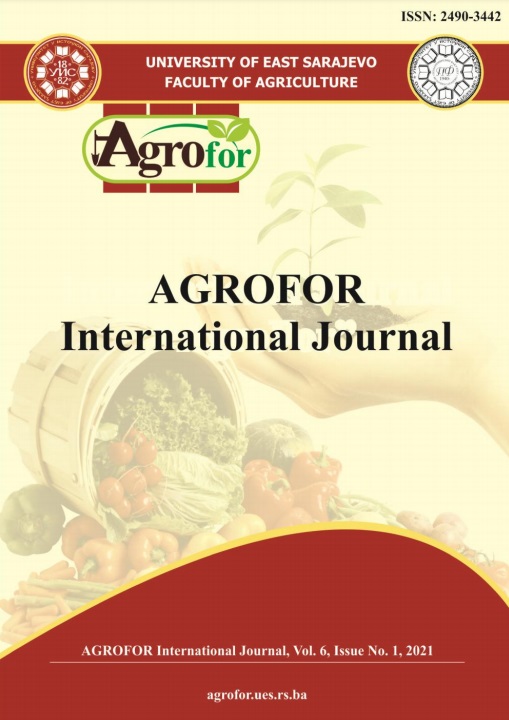ANTIBACTERIAL AND ANTIOXIDANT ACTIVITIES OF THE ESSENTIAL OIL OF CUMINUM CYMINUM SEEDS
DOI:
https://doi.org/10.7251/AGRENG2101079BAbstract
Cuminum cyminum (in arabic: Kemoun) is an important source of therapeutic,
cosmetic, bio-food and technological agents. Ancient civilizations used this plant
for therapeutic purposes. Extracts from this plant are nowadays strongly used in the
industrial and research fields, particularly for the medicinal, pharmacological and
cosmetological purposes. Bioactive molecules extracted from Cuminum cyminum
may express biocidal activities and prove to be good candidates for new
antioxidants. The objective of the present work is to evaluate the biological
properties of this plant, including antibacterial and antioxidant effects. The seeds of
cumin are harvested at the wilaya of Biskra, and stored in a dry place until their
use. They were identified at Hassiba Benbouali University of Chlef. Essential oil is
obtained by hydro-distillation using a Clivenger type device (AFNOR, 2000). The
obtained sample is stored in sealed bottles at low temperature (4°C) and away from
light. The antibacterial effect is assessed by the disc method. The minimum
inhibitory concentration (MIC) is determined by standard methods. The antioxidant
activity is evaluated by the DPPH free radical trapping method of the methanolic
extracts. The essential oil of C. cyminum shows a better activity against Gram+
strains compared to Gram- strains. The determination of MICs leads to the
conclusion that its activity can be triggered at a very low concentration. The
reaction with DPPH gives an interesting IC50. This testifies to the ability of this
essential oil to reduce free radicals. Thanks to the antibacterial activities that we
have highlighted, cumin can be considered as a palliative that could replace certain
antibiotics. Moreover, its antioxidant activity allows us to use it as a natural food
additive.

